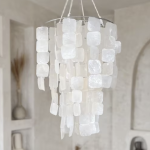Origami, the intricate art of paper folding, has a rich history that dates back over a thousand years. Its origins can be traced to ancient China, where paper was invented around 105 AD. Initially, the practice of folding paper was primarily utilitarian, serving purposes such as ceremonial offerings and religious rituals.
As the art form migrated to Japan in the 6th century, it began to evolve into a more refined craft. The Japanese embraced origami not only as a means of artistic expression but also as a way to convey cultural values and traditions. By the Edo period (1603-1868), origami had become a popular pastime among the Japanese elite, leading to the development of various styles and techniques.
The evolution of origami continued into the 20th century, when artists and mathematicians began to explore its potential beyond mere decoration. Figures such as Akira Yoshizawa revolutionized the craft by introducing new folding techniques and emphasizing the importance of design and aesthetics. Yoshizawa’s work laid the groundwork for modern origami, which is characterized by its complex structures and innovative designs.
Today, origami is not only appreciated as an art form but also studied in fields such as mathematics, engineering, and architecture, where its principles are applied to solve complex problems and create functional designs.
The Inspiration Behind the Origami Crane Floor Lamp
The Origami Crane Floor Lamp Uikobo draws its inspiration from one of the most iconic figures in origami—the crane. In Japanese culture, the crane is a symbol of peace, longevity, and good fortune. The legend of the thousand origami cranes suggests that anyone who folds a thousand cranes will be granted a wish, often interpreted as a desire for health or happiness.
This deep-rooted symbolism makes the crane an ideal muse for designers seeking to create pieces that resonate with cultural significance while also serving a functional purpose. The design of the Origami Crane Floor Lamp encapsulates the elegance and grace associated with the crane. Its form mimics the delicate lines and folds of an actual origami crane, creating a striking visual impact that captures attention in any space.
The lamp serves not only as a source of light but also as a conversation starter, inviting viewers to appreciate the artistry behind its design. By incorporating elements of traditional Japanese culture into contemporary lighting design, the lamp bridges the gap between past and present, showcasing how ancient art forms can inspire modern aesthetics.
The Design and Construction of the Origami Crane Floor Lamp
The construction of the Origami Crane Floor Lamp involves meticulous attention to detail and craftsmanship. Designers often begin with high-quality paper or synthetic materials that mimic the texture and appearance of traditional origami paper. The choice of material is crucial, as it must be both lightweight and durable enough to withstand the rigors of everyday use while maintaining its aesthetic appeal.
The folding process itself requires precision; each crease must be sharp and intentional to ensure that the final product accurately reflects the intended design. Once the basic structure is established, designers incorporate lighting elements into the lamp. LED technology is commonly used due to its energy efficiency and versatility.
The placement of the light source is carefully considered to enhance the lamp’s overall design while providing adequate illumination. The interplay between light and shadow created by the folds of the paper adds depth and dimension to the lamp, transforming it into a dynamic piece of art that changes with the angle of view. This thoughtful integration of form and function exemplifies how modern design can honor traditional techniques while embracing contemporary technology.
The Symbolism of the Crane in Japanese Culture
In Japanese culture, the crane holds profound symbolic meaning that transcends mere aesthetics. Often referred to as “tsuru,” cranes are believed to embody grace, fidelity, and longevity. They are frequently depicted in art and literature as messengers of happiness and good fortune.
The association between cranes and auspiciousness is so strong that they are often featured in wedding ceremonies and other significant life events, symbolizing hope for a prosperous future. The legend of Senbazuru, or a thousand cranes, further amplifies the crane’s significance in Japanese culture. According to this legend, folding one thousand origami cranes grants the folder a wish or healing from illness.
This belief gained international attention through stories like that of Sadako Sasaki, a young girl who folded cranes in hopes of recovering from leukemia caused by the Hiroshima bombing. Her story has inspired countless individuals worldwide to engage in origami as a form of hope and resilience. Thus, incorporating crane motifs into design elements like lighting not only enhances aesthetic appeal but also imbues spaces with cultural depth and emotional resonance.
The Use of Paper as a Sustainable Material in Lighting Design
In recent years, sustainability has become a paramount concern in design across various industries, including lighting. Paper, particularly when sourced from recycled materials or sustainable forestry practices, presents an eco-friendly alternative to traditional lighting materials such as plastic or metal. The use of paper in lighting design aligns with growing consumer demand for environmentally responsible products while also offering unique aesthetic qualities that other materials may lack.
The lightweight nature of paper allows for innovative designs that can be both functional and visually striking. Designers can experiment with various textures, colors, and patterns, creating lamps that not only illuminate spaces but also serve as artistic statements. Additionally, paper’s ability to diffuse light creates a warm ambiance that enhances interior environments.
As consumers become increasingly aware of their environmental impact, products like the Origami Crane Floor Lamp exemplify how traditional materials can be reimagined in contemporary contexts to promote sustainability without sacrificing style.
The Impact of Origami in Contemporary Interior Design
Dynamic Visual Experiences
Incorporating origami-inspired designs into interiors allows for dynamic visual experiences that can adapt to changing needs. For instance, furniture pieces that fold or expand can provide versatility in small living spaces while adding an artistic touch to the overall decor.
Origami’s Aesthetic Appeal
Additionally, origami’s emphasis on geometric shapes and clean lines resonates with modern minimalist aesthetics, making it a popular choice among designers seeking to create sleek and sophisticated environments.
Maximizing Space with Origami
By incorporating origami-inspired designs, designers can create spaces that are both functional and visually appealing, making the most of the available space.
How the Origami Crane Floor Lamp Enhances Ambiance and Mood
The Origami Crane Floor Lamp serves not only as a functional lighting source but also as an essential element in enhancing ambiance and mood within a space. The soft glow emitted by its carefully designed folds creates an inviting atmosphere that encourages relaxation and comfort. This quality makes it particularly suitable for living rooms, bedrooms, or any area intended for unwinding after a long day.
Moreover, the lamp’s unique design draws attention without overwhelming its surroundings. Its elegant silhouette can serve as a focal point in a room or complement existing decor seamlessly. The interplay between light and shadow produced by its intricate folds adds depth to interiors, creating visual interest that evolves throughout the day as natural light changes.
By thoughtfully integrating such pieces into their homes, individuals can cultivate environments that reflect their personal style while promoting well-being.
The Future of Origami-Inspired Lighting Design
As technology continues to advance and sustainability becomes increasingly important in design practices, the future of origami-inspired lighting holds exciting possibilities. Innovations in materials science may lead to new types of paper or composite materials that enhance durability while retaining the aesthetic qualities associated with traditional origami. Additionally, advancements in LED technology could allow for even more creative applications of light within origami designs.
Furthermore, as designers increasingly embrace interdisciplinary approaches—merging art with science—origami may find new applications beyond decorative lighting. For instance, researchers are exploring how origami principles can inform architectural designs that adapt to environmental conditions or optimize energy efficiency. This intersection of art and technology could pave the way for groundbreaking innovations that redefine how we think about space and illumination.
In conclusion, origami-inspired lighting design represents a harmonious blend of tradition and modernity, offering both aesthetic appeal and cultural significance. As we look ahead, it is clear that this ancient art form will continue to inspire creativity across various domains while promoting sustainability and enhancing our living environments.


